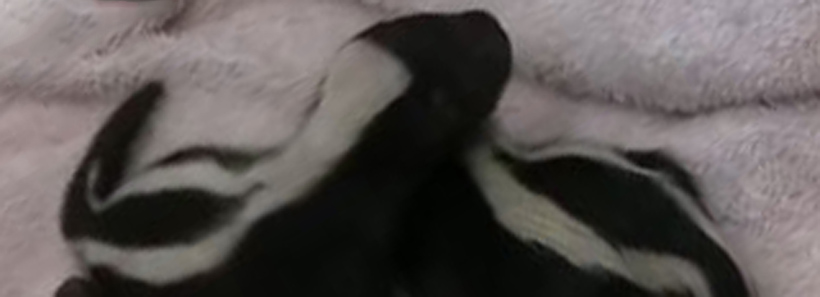For the most part skunks are what is referred to as crepuscular animals, meaning that they live primarily a life that is solitary but will take shelter with other skunks when the weather is so severe that it necessitates it to survive. The only other time that skunks are found around each other is during breeding time. Clearly the skunk is not able to breed on its own, so this becomes the one time that you can be sure that they will be spending some time together.

Skunks mate in the early part of the spring. They do not hibernate, so the early part of when spring first appears is the prime time for them to mate. They are polygynous animals, meaning that the male will mate with more than one female, meaning he can have progeny from more than one female during any mating season.
Just prior to the female giving birth, she will dig out a den in which she will house her litter just after they are born. A female will have between four to seven kits in a litter, and the gestation period of the baby skunk is about 66 days from conception.
When the babies are born they are blind, deaf, and have a very soft layer of fur. It is not surprising that the skunk is blind at birth, as these animals will have poor eyesight their entire lives, but the deaf part is a bit surprising because skunks have such an acute sense of hearing as adults.
While the anal glands are in place, the kit is not able to produce that horrible spray that skunks are so well known for. The mother, however, is and she will spray at will at the first sign of danger. She is extremely protective of her young and that shows in the way that she will use this anal gland.
After about three weeks after they are born, the babies open their eyes. Eyesight is quite limited, but they do have some vision within a few days. The kits are weaned from their mother within about two months, but they do not leave their mothers right away. In fact, a kit is known to stay with the mother for nearly a year after birth. What is the factor that usually gets them sent away is that another male may come to seek to mate with that female and sees the kits as an interloper. They will attack the kits if they do not go away, and the mother will not protect them because she is preparing herself for mating. The kits are able to engage in the mating process within a year from their birth.
Read more:
Skunk Control,
how to kill skunks.